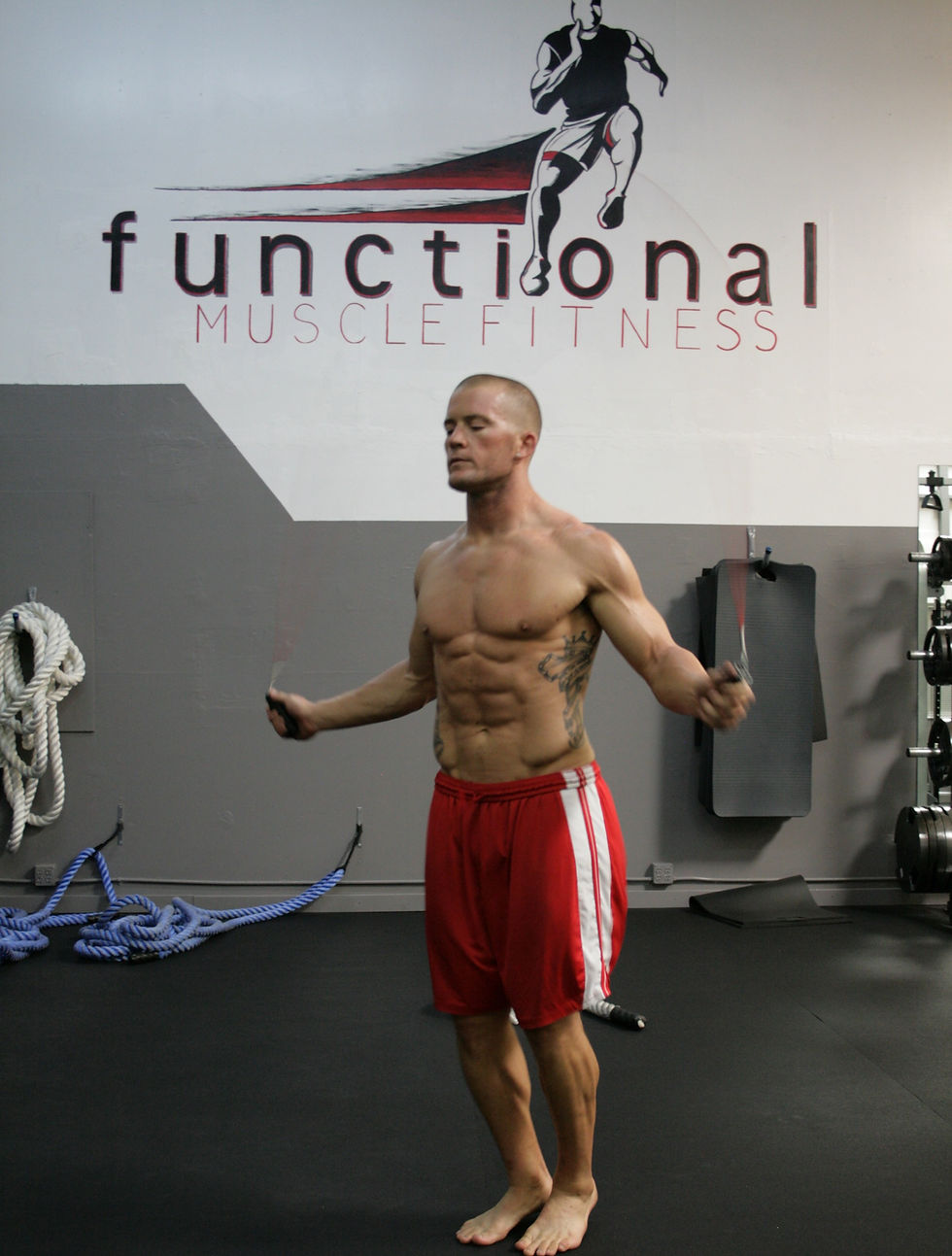BURNING FAT... GETTING LEAN
- Mark Wine CSCS
- Apr 13, 2021
- 3 min read

Burn Fat and Lean Up Fast
By, Mark Wine CSCS; BA; PES; CES
A common question I am asked frequently is “what is the best form of cardio to burn fat?” My answer is always the same, resistance training! Resistance training is the best way to burn fat and lean up. Cardio, although important, is not nearly as effective as performing resistance training with proper load (i.e. weight) and limited rest times. Lift heavy with limited rest times and your body will burn fat as fuel.
Resistance training is when external load (i.e. stress) is placed upon our skeletal musculature system and high amounts of energy expenditure is required to move the load. The energy expenditure results in high calorie burning, fat loss and muscle growth.
For all you calorie counters, resistance training can extend caloric expenditure for 24 to 48 hours post workout. Cardio, on the other hand, has a limited window to burn calories that is from the start to the end.
The extended caloric expenditure caused by resistance training is called excess post exercise oxygen consumption (EPOC). Resistance training results in the following energy processes that make up EPOC (1-2):
· Replenishment of oxygen within the blood and muscle
· Increased ventilation
· Increased body temperature
· Increased heart rate
· Substrate utilization shifts from carbs to fats (i.e. lipids)
· Glycogen resynthesis
· Replenishment of adenosine triphosphate (ATP)
· Replenishment of creatine phosphate (CP)
· Increased triglyceride or fatty acid cycling
The list could go on but those are the main energy processes that resistance training results in.
Resistance training results in muscular breakdown, which leads to muscular synthesis (i.e. healing). The workout intensity level dictates the degree of muscular damage caused by the external stress and that determines the degree of EPOC. One study supported workout intensity by showing that the participants who performed 85% of a 1 repetition max (1RM) produced the greatest EPOC response over their counterparts who performed 45% of a 1RM (3). Low intensity resistance training (i.e. lighter loads) are not nearly as successful at stimulating fat loss or lean muscle growth as high-intensity training (HIT).
Another key determining factor of EPOC is the type of training / muscular action performed during the workout. Eccentric muscular action, which results in the greatest amount of muscular damage, has been shown to elevate EPOC levels the highest (4). Eccentric loading is when an external source applies force upon the skeletal muscle system. An eccentric action example is when the barbell is lowered down to the chest during bench press. Eccentric actions result in significant muscular damage, which creates a domino effect of muscular synthesis (i.e. repair). The energy processes required for repair results in lean muscle growth and elevated EPOC.
If your goal is to burn fat, lose weight and lean up then choose resistance training. Cardio, although a helpful aid, is limited in nature. Performing high-intensity resistance training, which utilizes eccentric muscular actions, is the only way to get that lean physique.
Sources
1. Effect of resistance training on excess post-exercise oxygen consumption
Elliot, D, Goldberg, L, and Kuehl, K.
Journal of Strength & Conditioning Research 6: 78-80, 1992.
2. Essentials of Strength & Conditioning
Baechle, T and Earle, R.
Champaign, IL: Human Kinetics, 2000.
3. Effects of resistance exercise bouts of different intensities but equal work on EPOC
Thornton, MK, and Potteiger, JA.
Med Sci Sports Exerc 34: 715-720, 2002.
4. Resting energy expenditure and delayed-onset muscular soreness after full-body resistance training with an eccentric concentration.
Hackney, KJ, Engels, HJ, and Gretebeck, RJ.
Journal of Strength & Conditioning Research 22: 1602-1607, 2008.



Comments